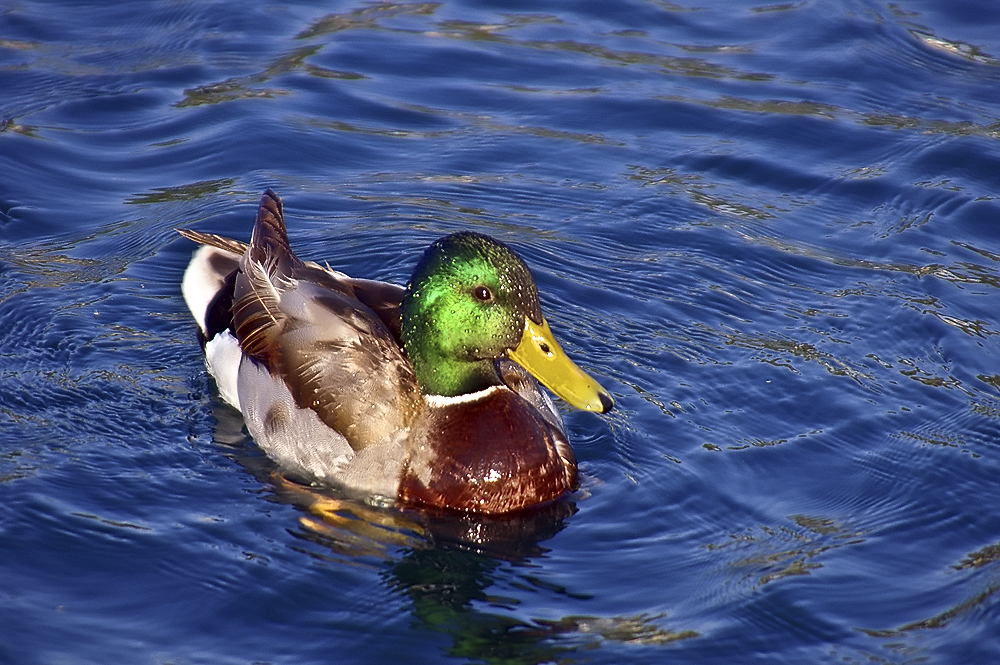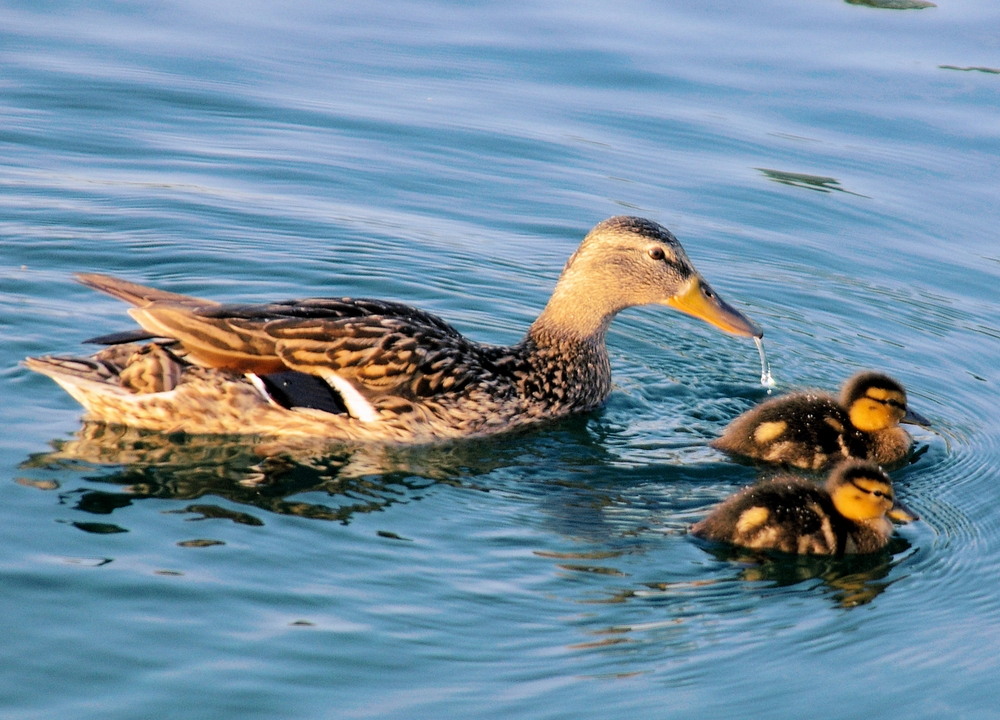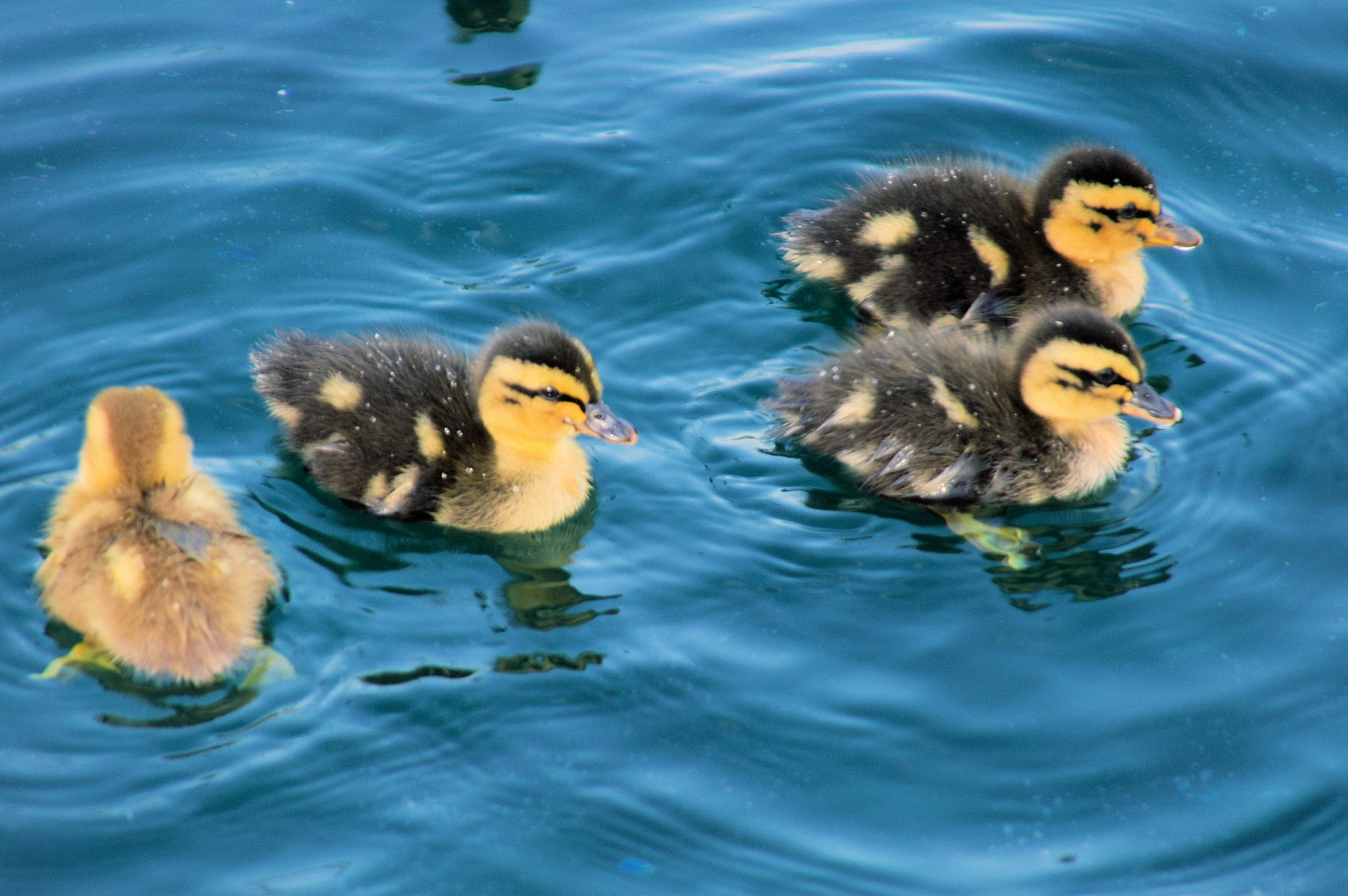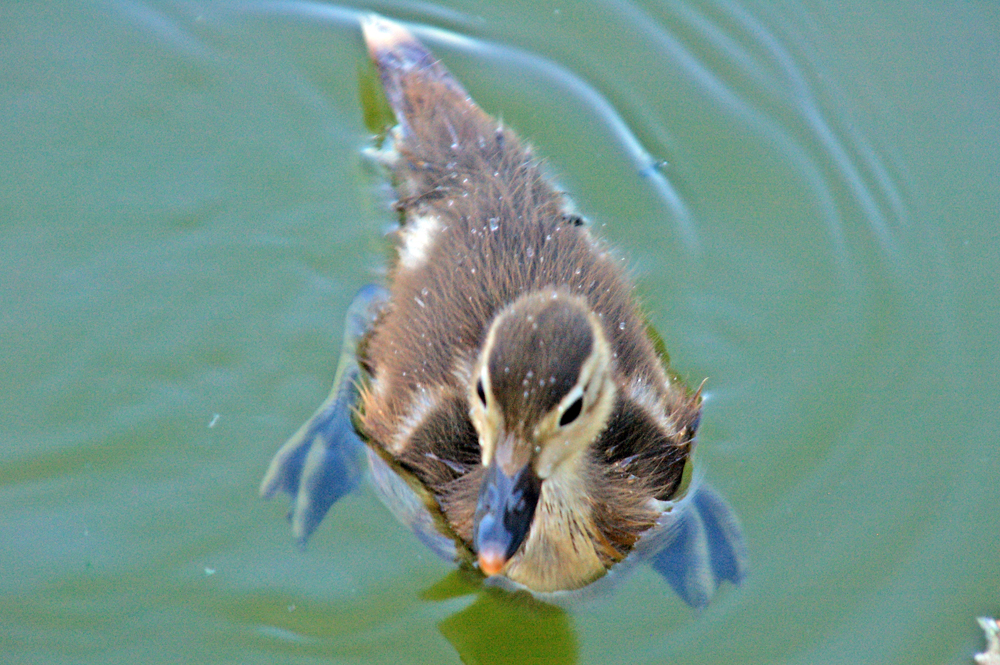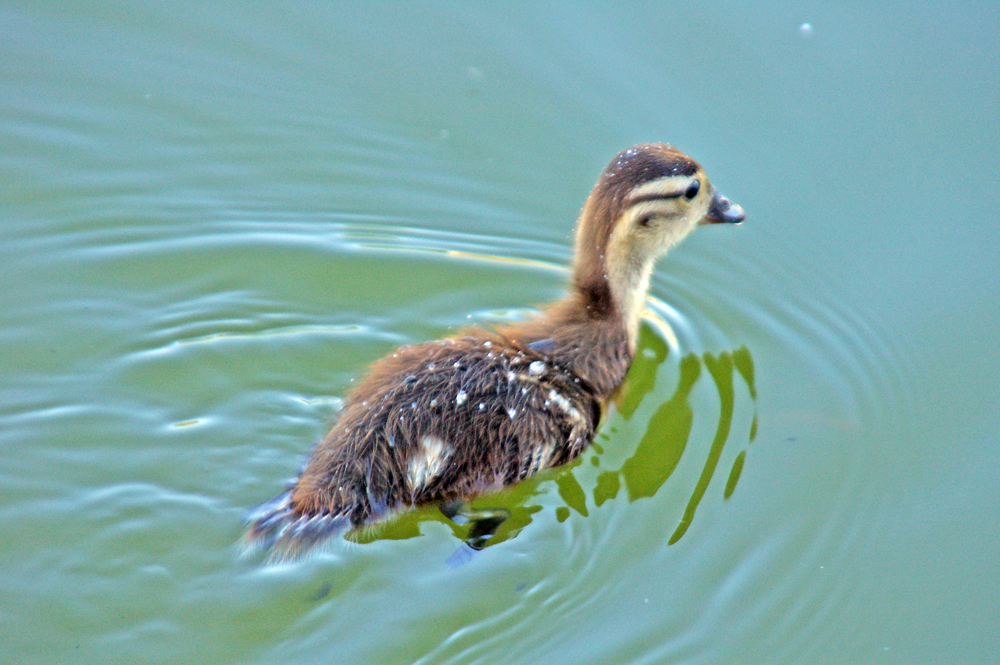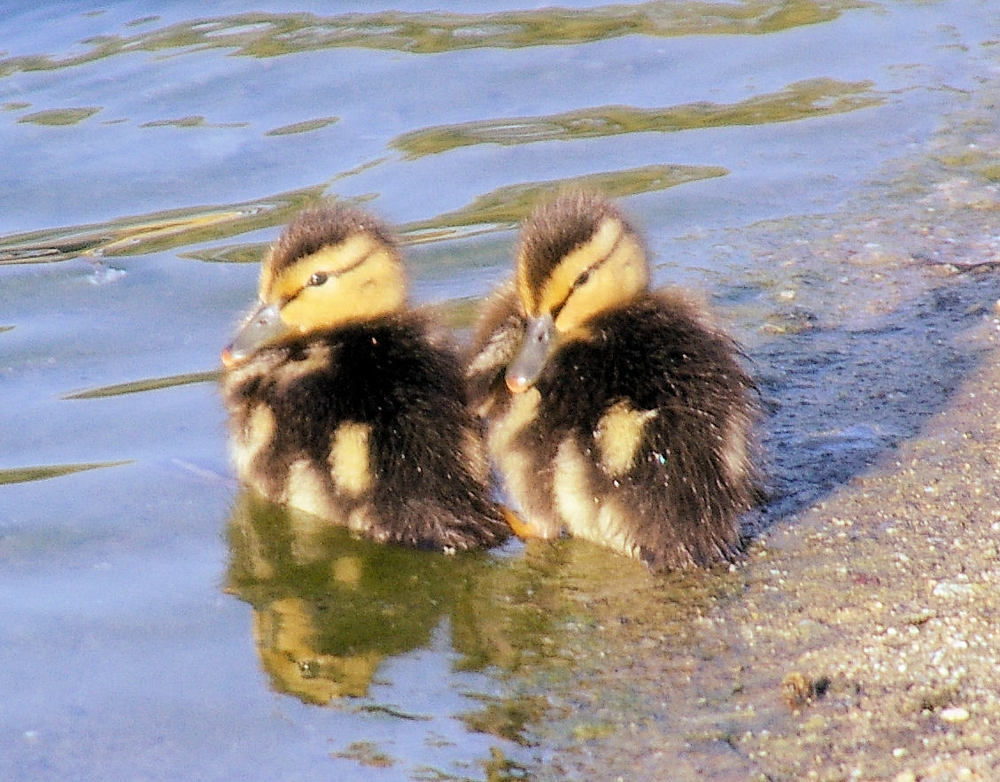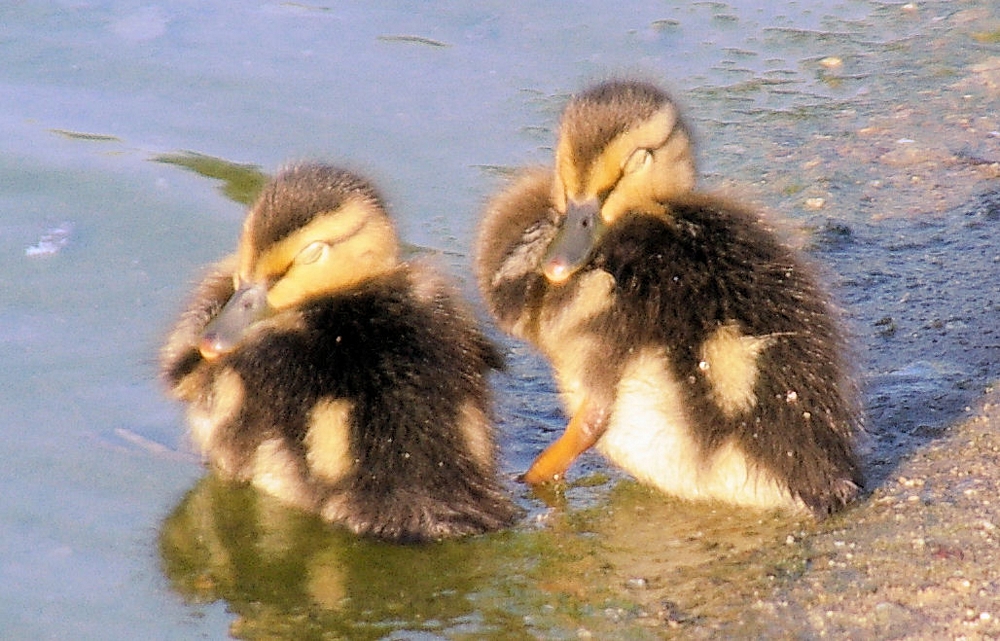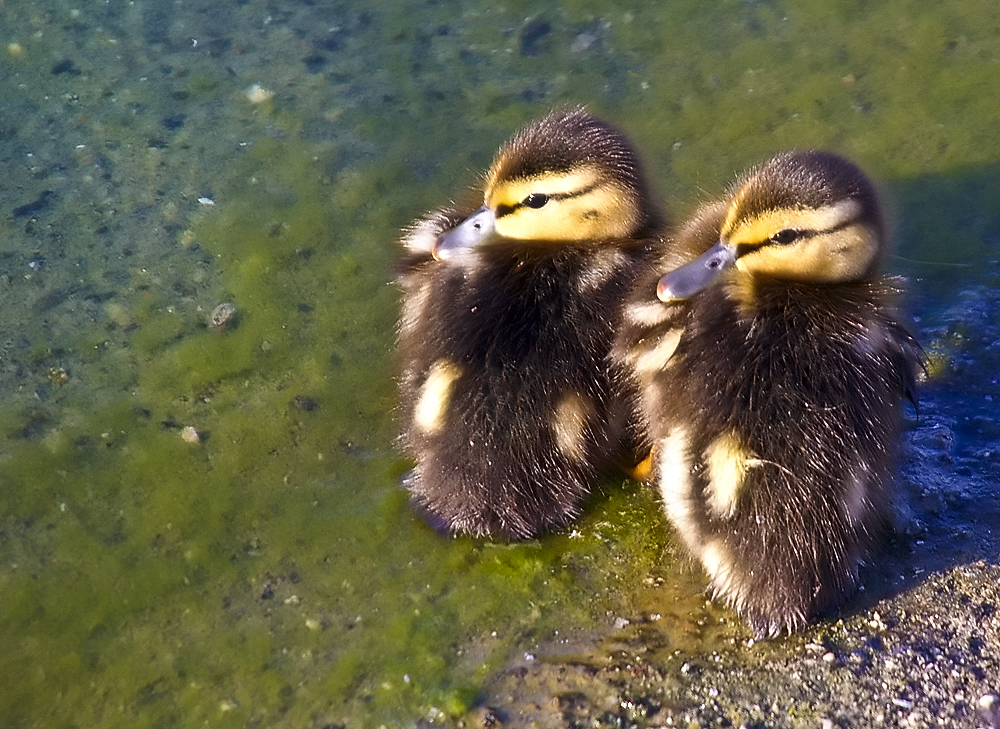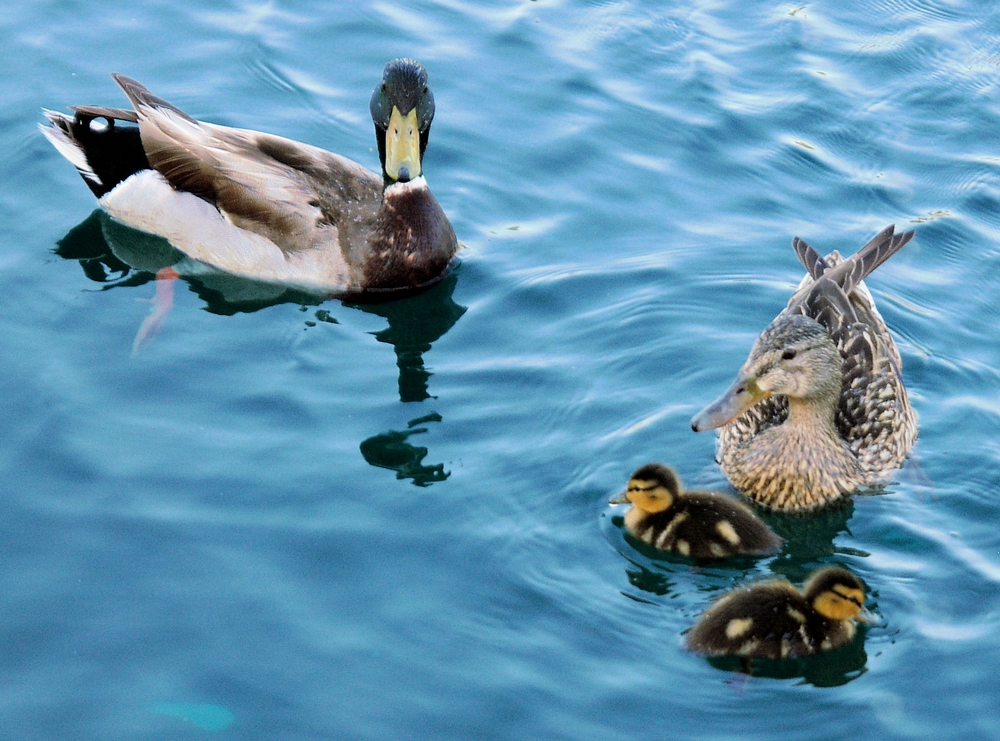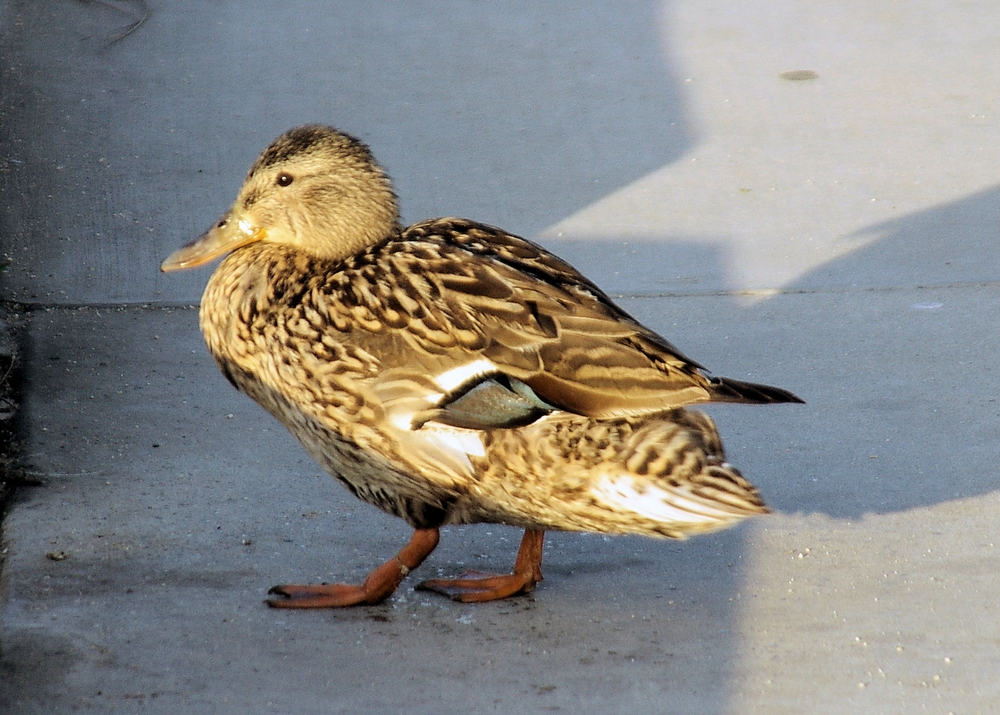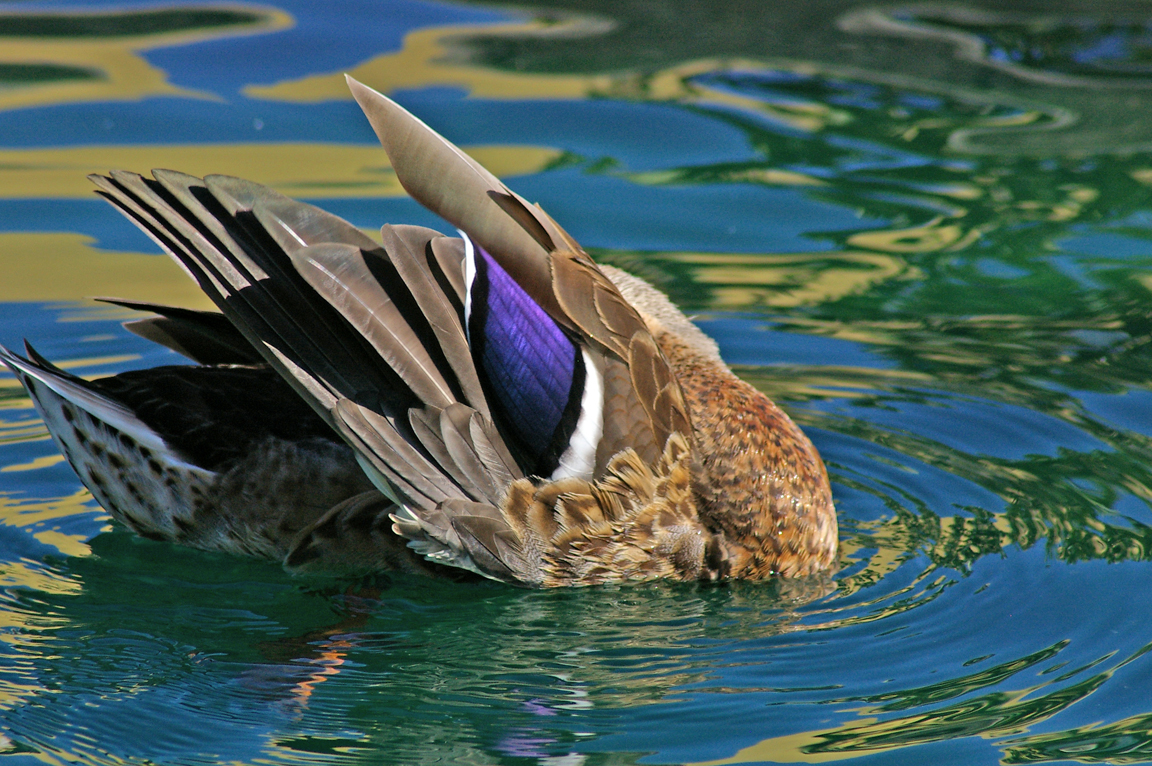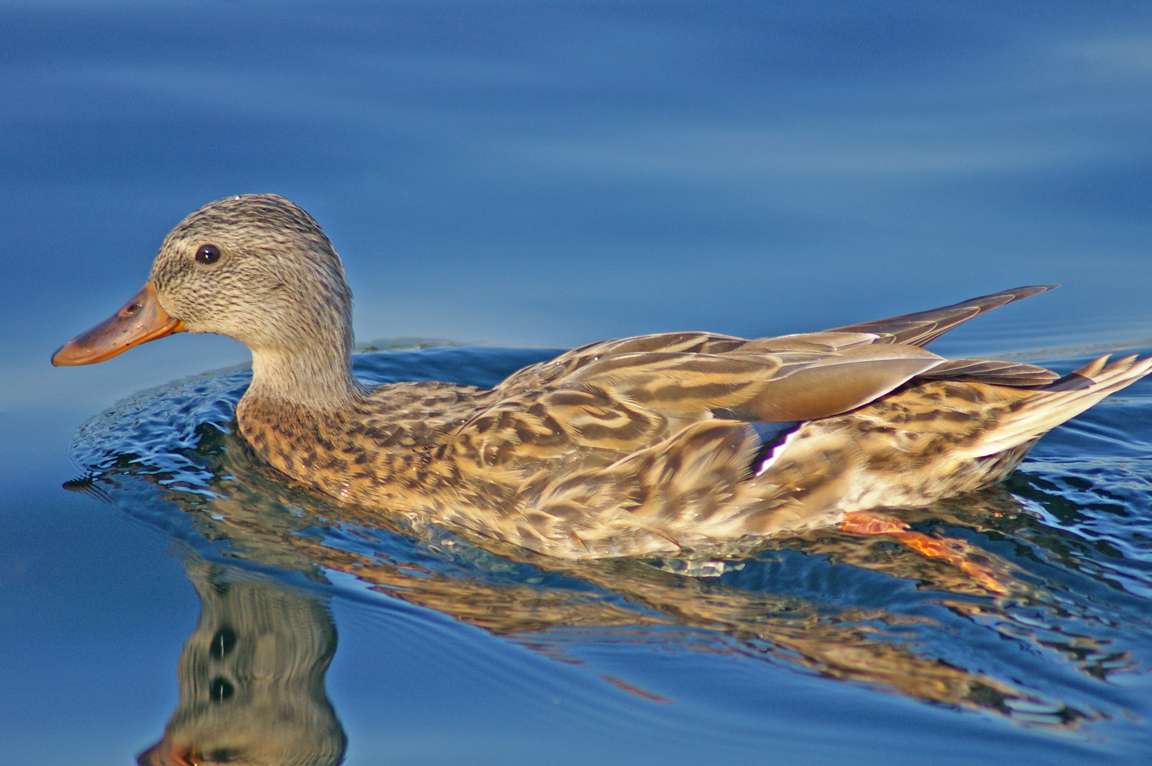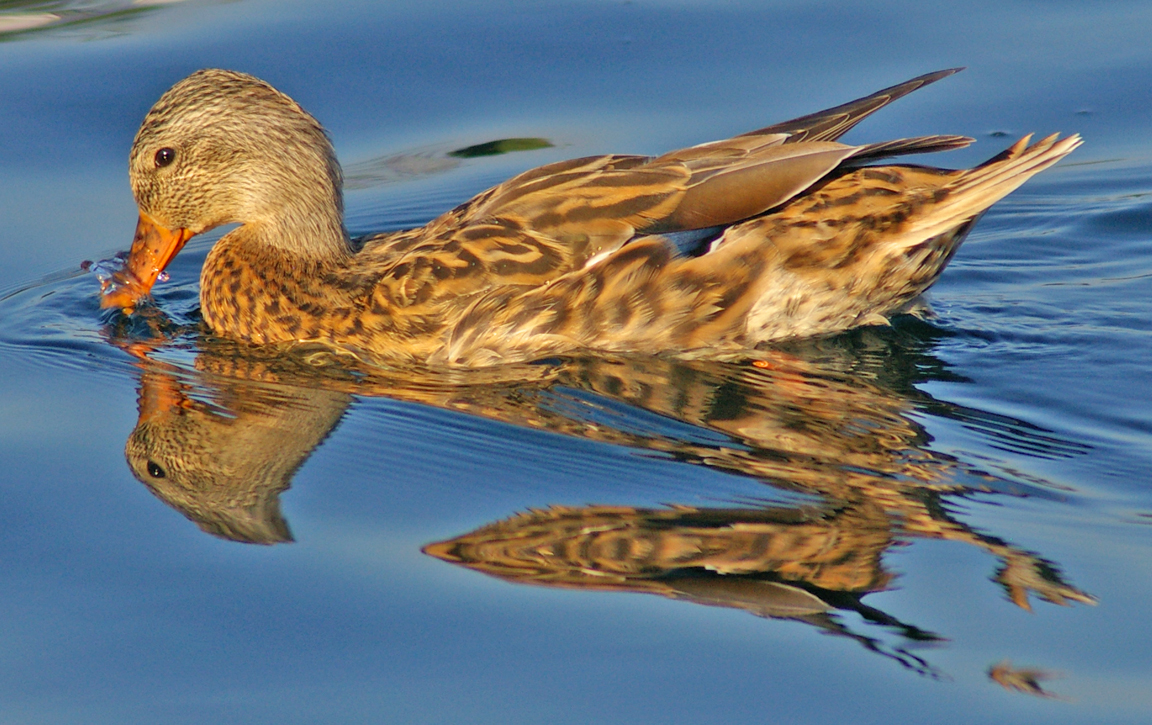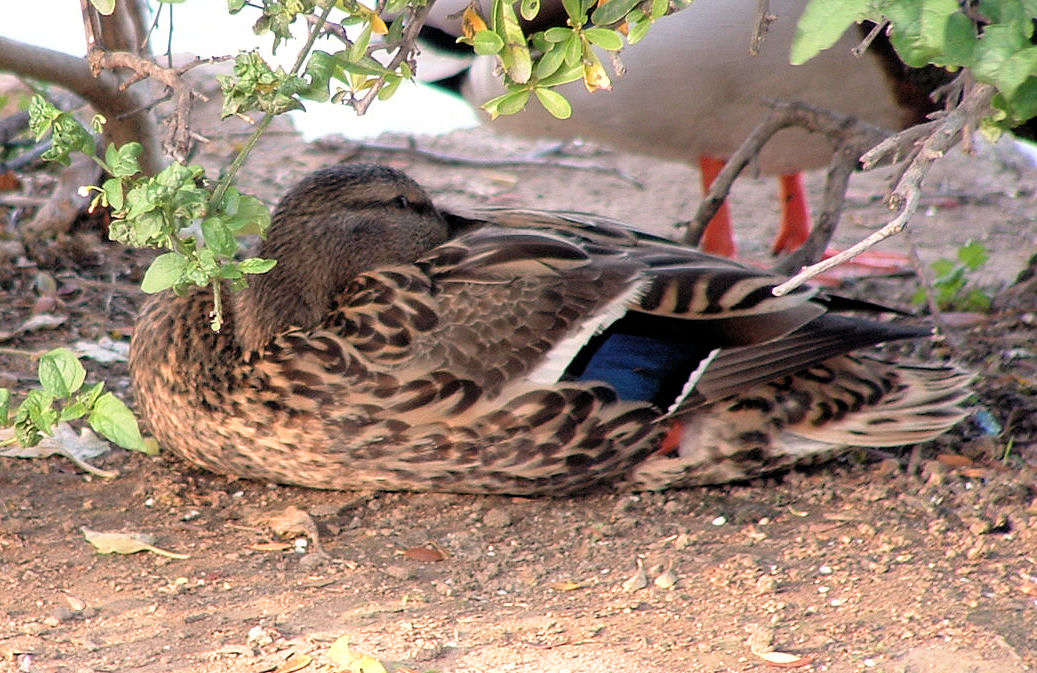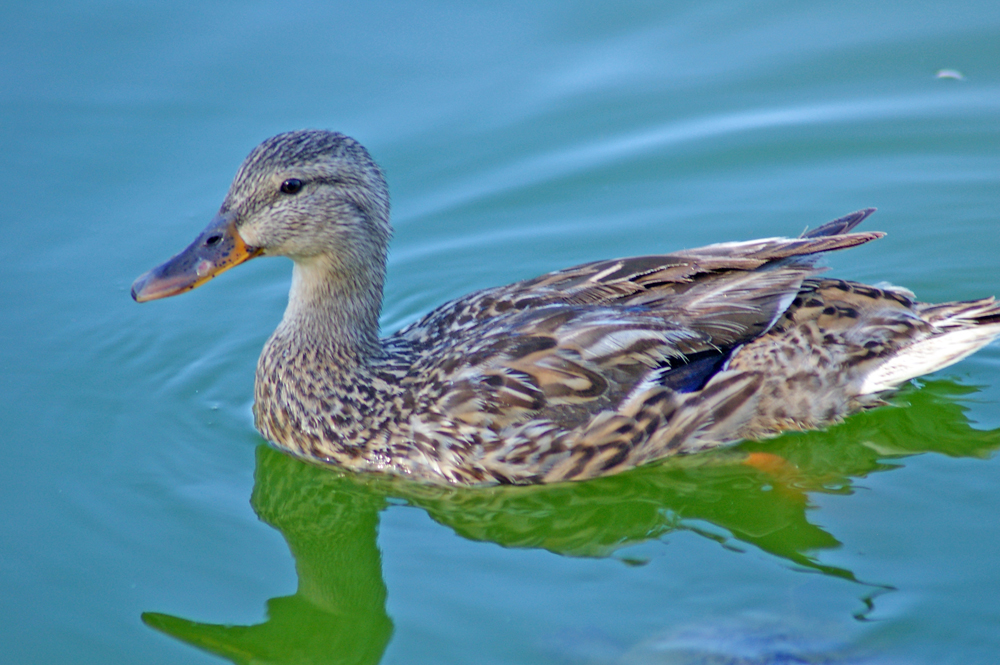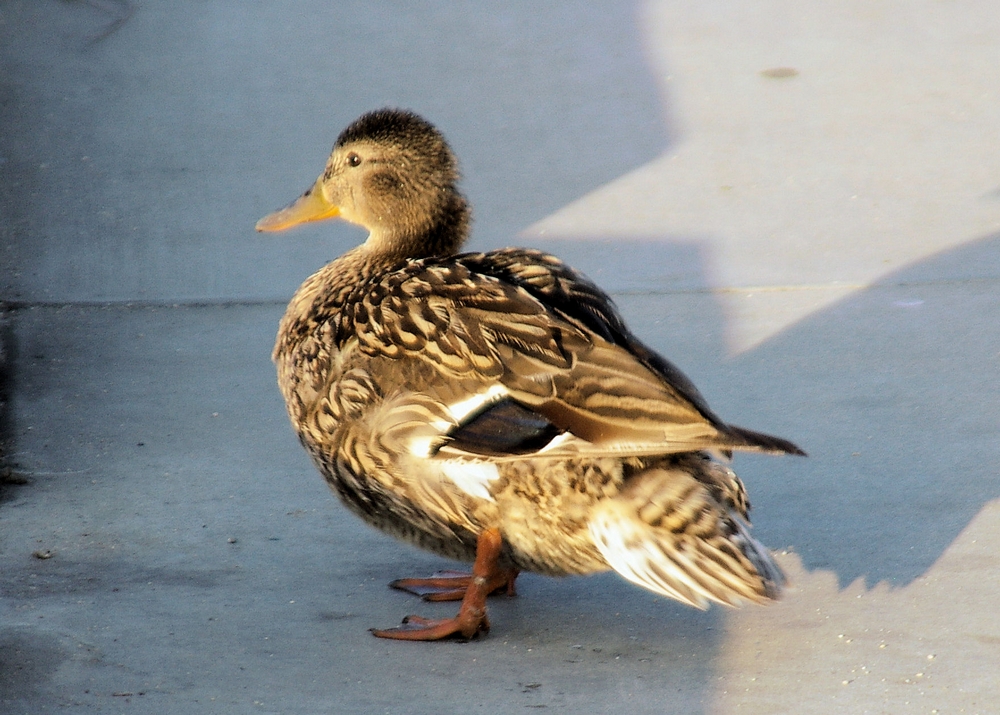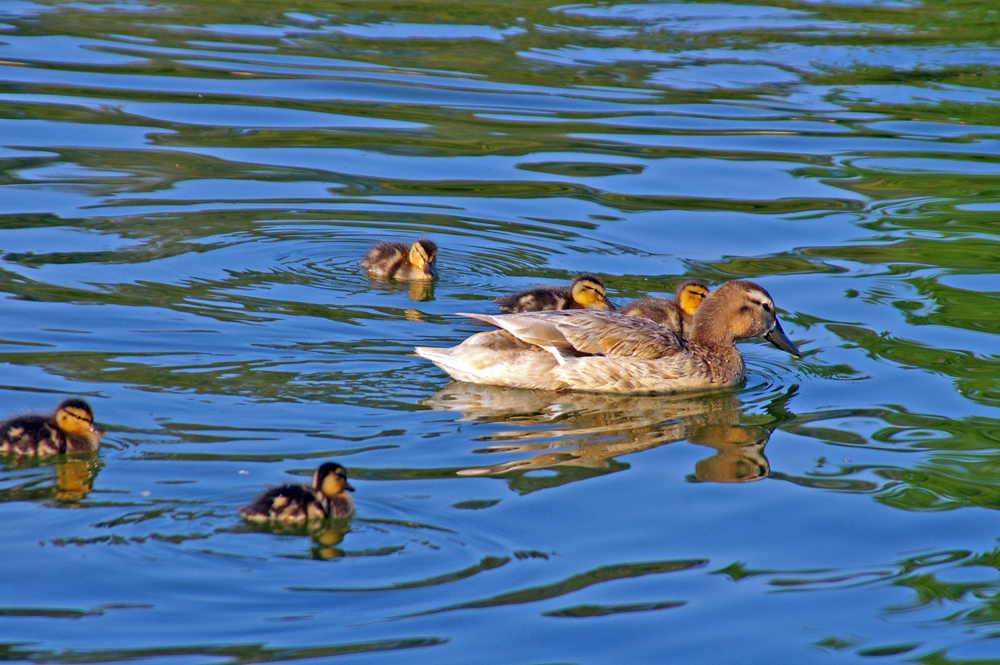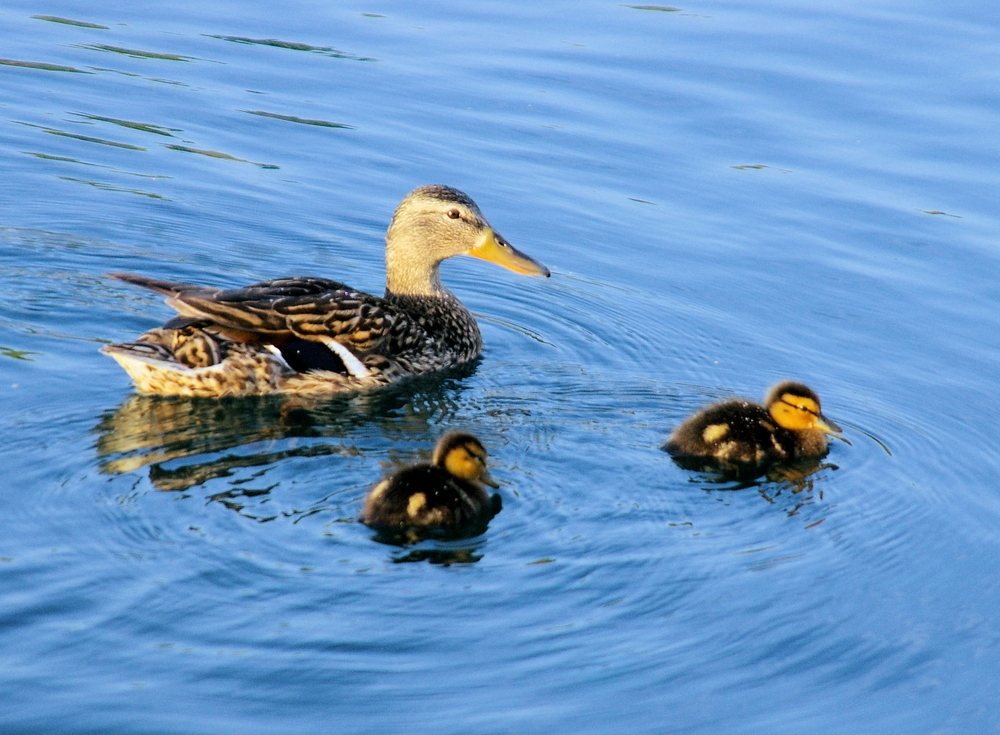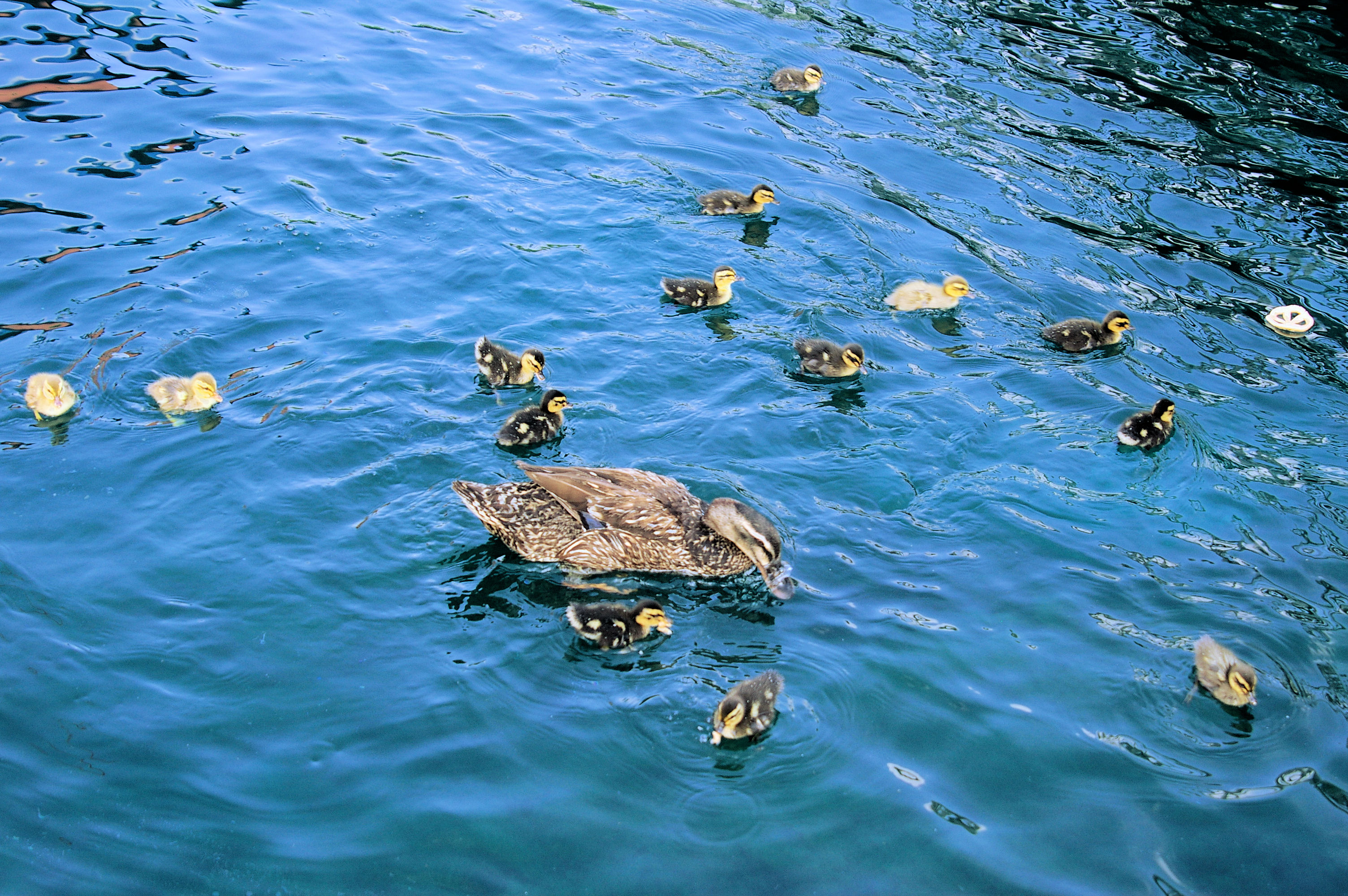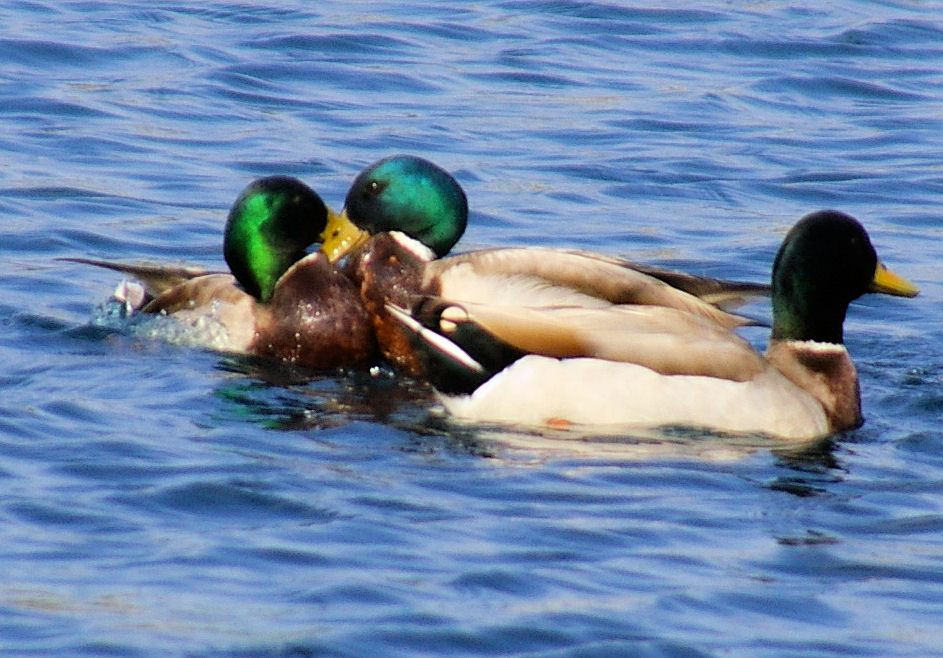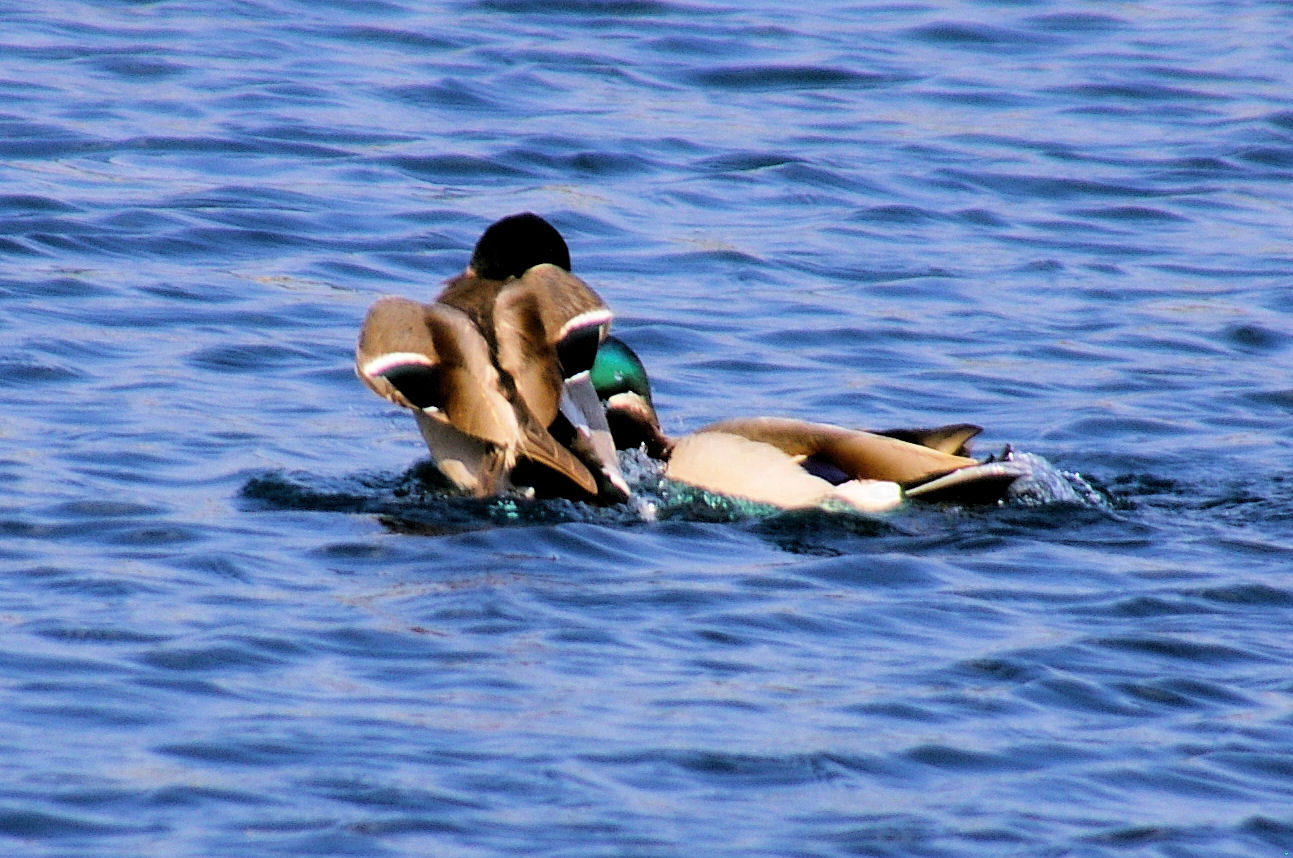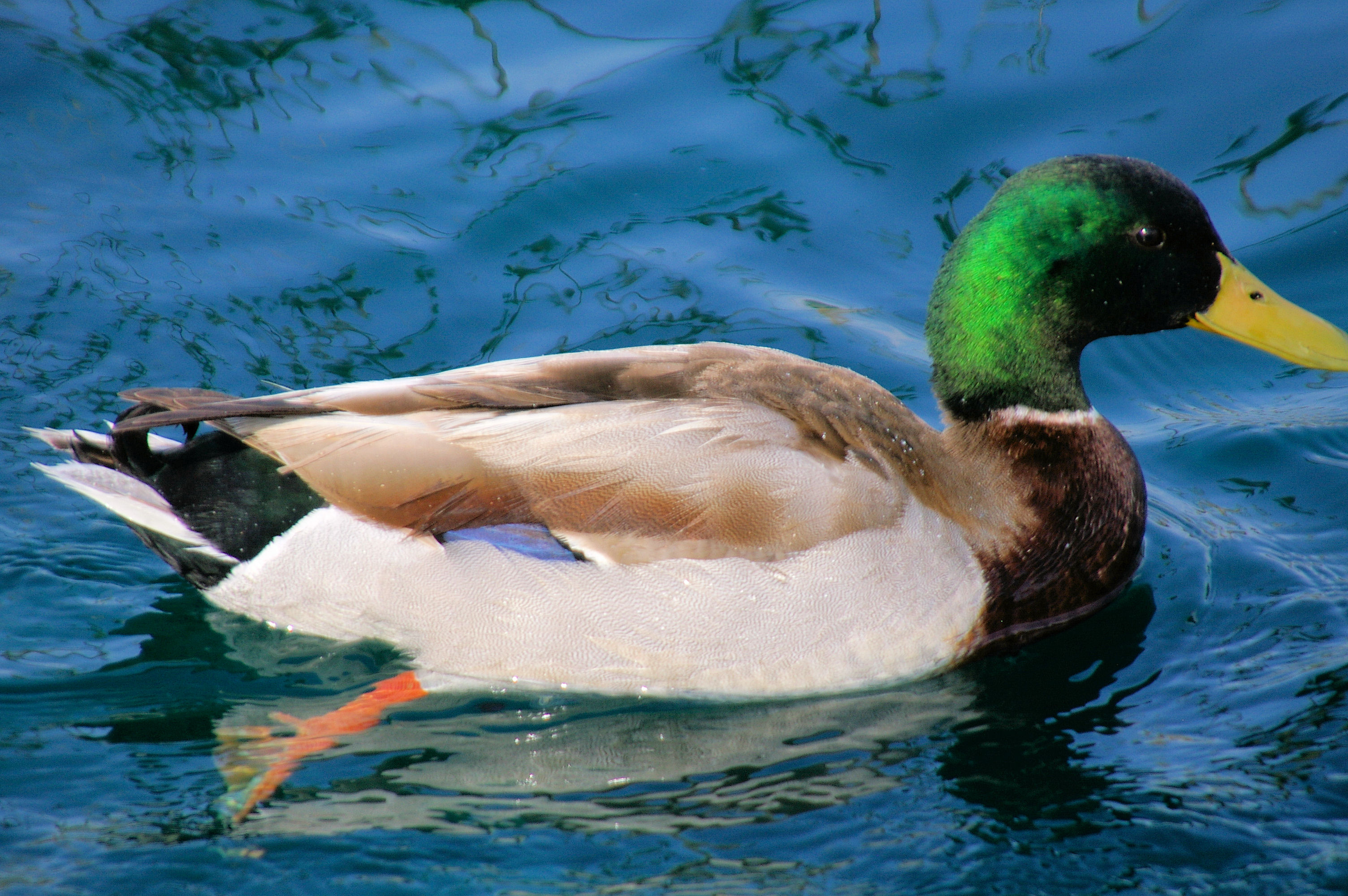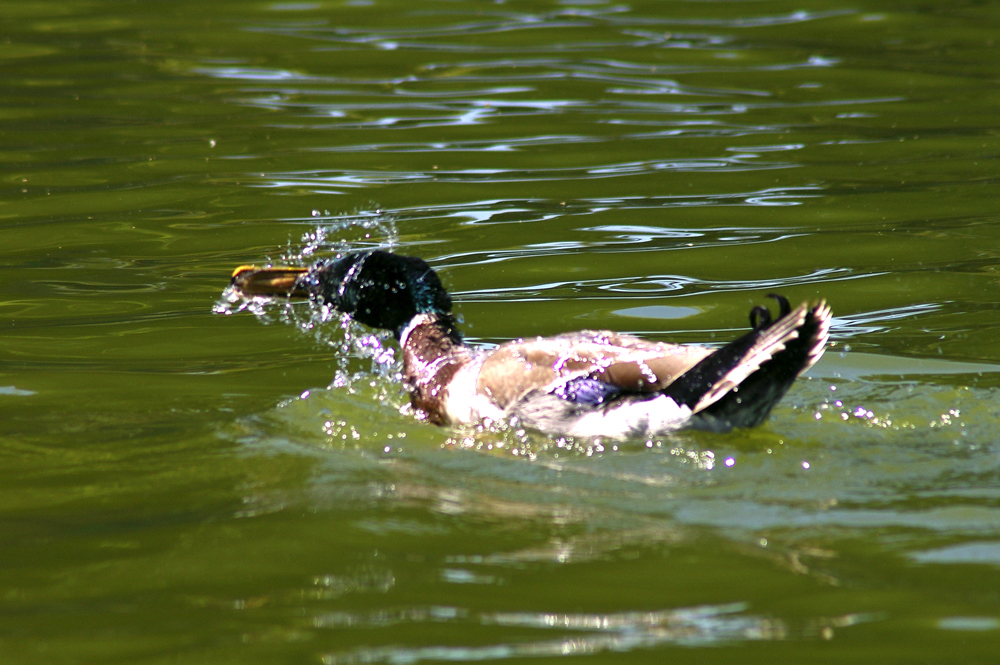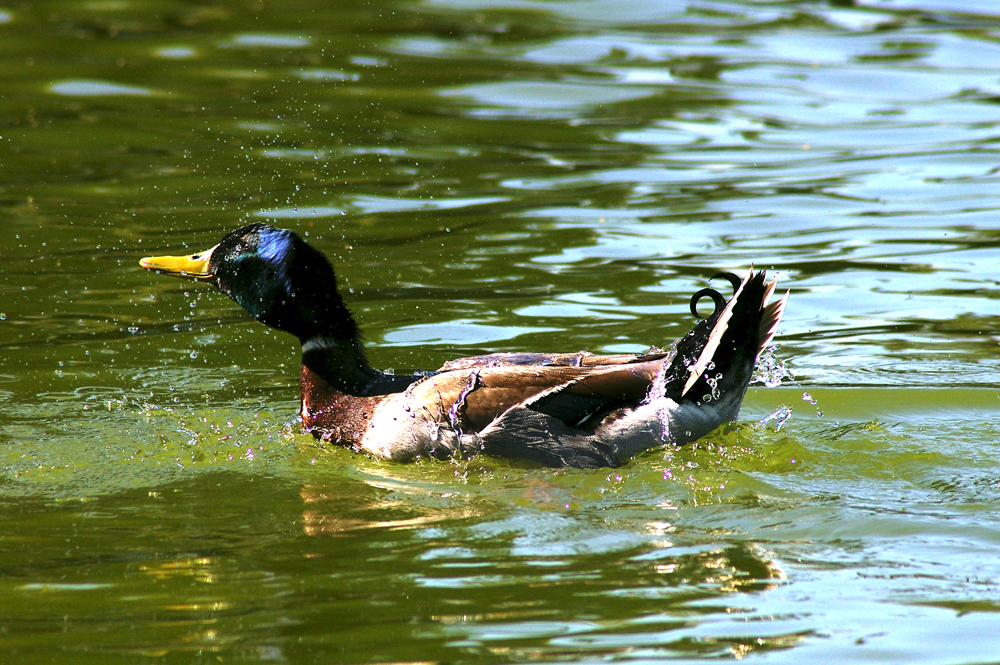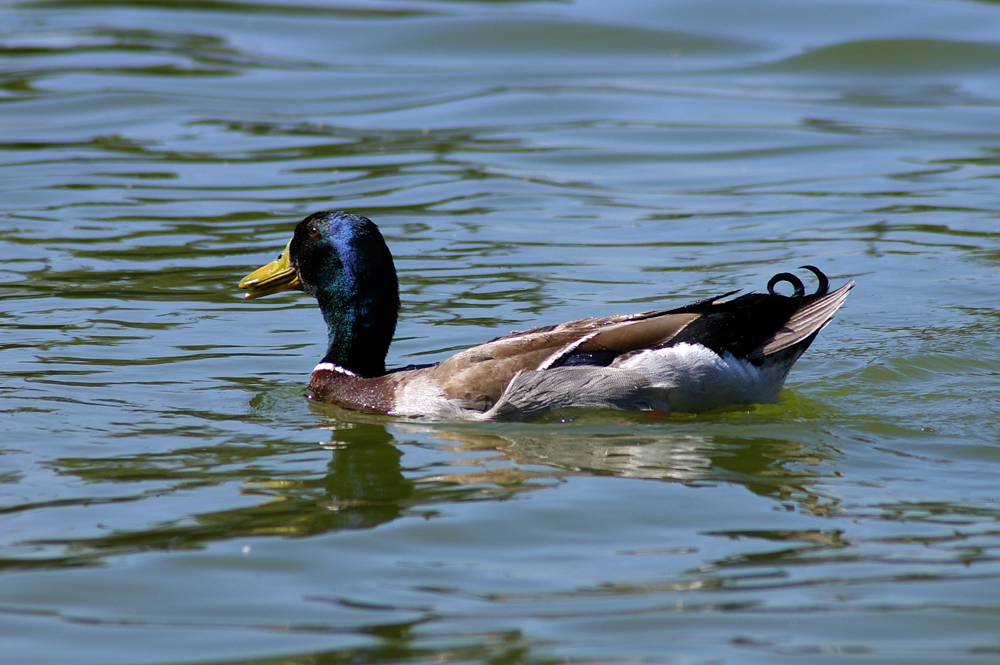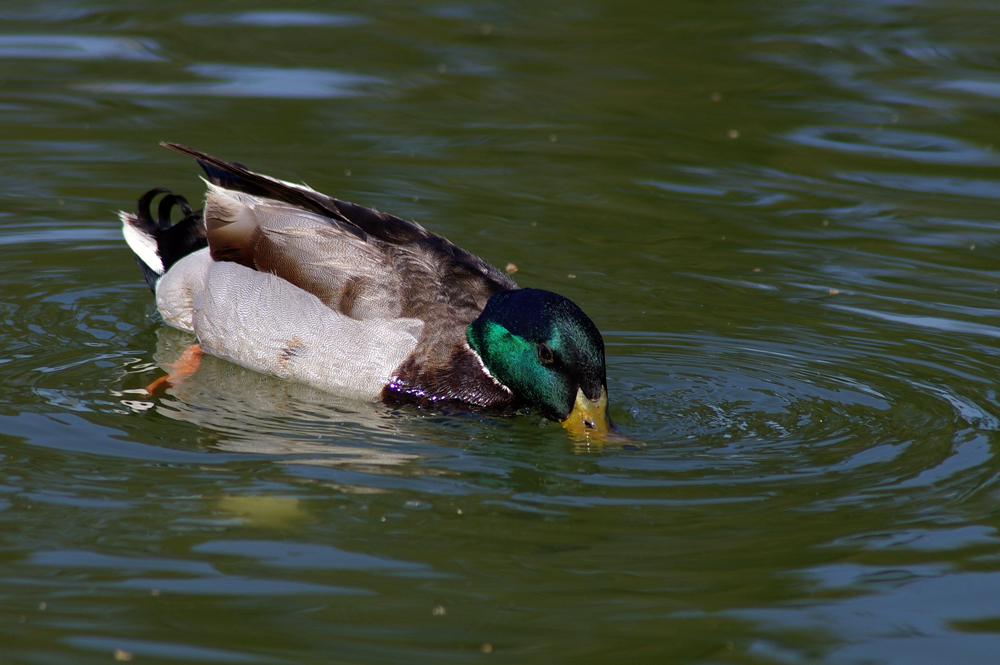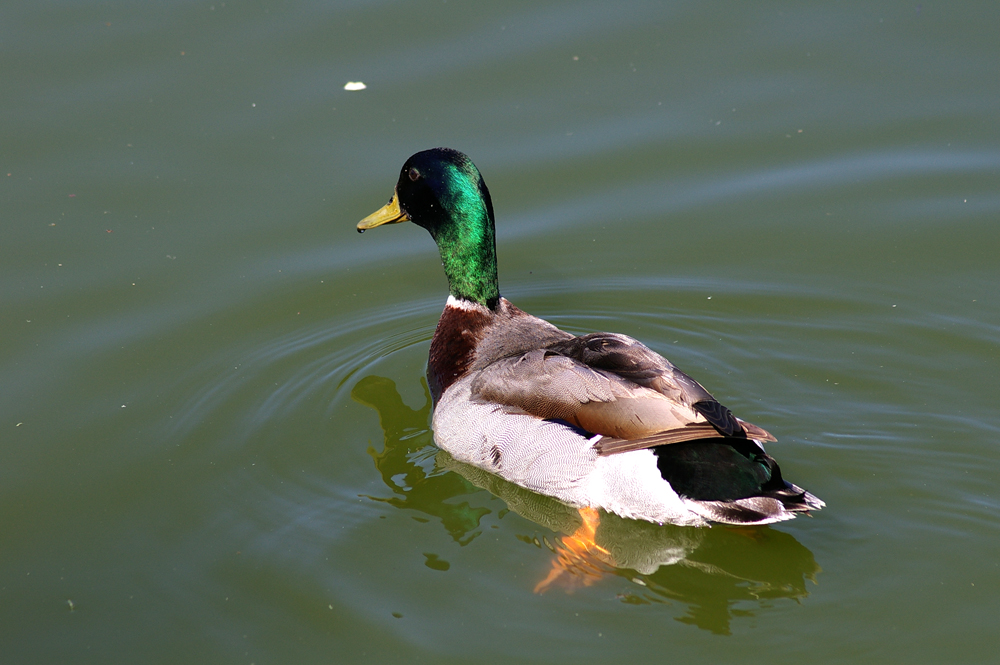|
|
|
 |
Mallard Duck
|
| Anas platyrhynchos | |
One of the most familiar of ducks, the Mallard is found throughout North America and all across Eurasia. Where it does not occur naturally, it often has been introduced. It is found in all kinds of wetlands and is a familiar inhabitant of urban park ponds.
Interesting Information
-
The Mallard is the ancestor of nearly all domestic duck breeds (everything except the Muscovy Duck). Many of the domestic breeds look like the wild birds, but usually are larger. They are variable in plumage, often lacking the white neck ring or having white on the chest. Feral domestic ducks breed with wild Mallards and produce a variety of forms that often show up with wild ducks, especially in city parks.
-
The widespread Mallard has given rise to a number of populations around the world that have changed enough that they could be considered separate species. The "Mexican Duck" of central Mexico and the extreme southwestern United States and the Hawaiian Duck both are closely related to the Mallard, and in both forms the male is dull like the female. The Mexican Duck currently is considered a subspecies of the Mallard, while the Hawaiian Duck is still given full species status.
-
Mallard pairs are generally monogamous, but paired males actively pursue forced extra-pair copulations. Copulation between members of a pair usually takes place in the water after a long bout of elaborate displays. Forced copulations are not preceded by displays, and several males may chase a single female and mate with her.
-
Mallard pairs form long before the spring breeding season. Pairing takes place in the fall, but courtship can be seen all winter. Only the female incubates the eggs and takes care of the ducklings.
Description
Adult Description
-
Size: 50-65 cm (20-26 in)
-
Wingspan: 82-95 cm (32-37 in)
-
Weight: 1000-1300 g (35.3-45.89 ounces)
-
Large dabbling duck.
-
Male with iridescent green head, rusty chest, and gray body.
-
Female mottled brown.
-
Back of wing (speculum) shiny blue, with white line in front and behind.
-
Wing linings white.
-
Legs bright orange.
Sex Differences
Male with bright green head and pale body, female dull brown all over.
Female
Brownish all over with mottled streaking of buff, white, and dark brown. Face paler than body. Dark line through eye. Dark streak on crown. Belly pale. Tail whitish. Undertail pale. Bill orange or yellow marked with variable splotches of black. Legs red-orange.
Male
Breeding (Alternate) Plumage:
Head iridescent dark green. Narrow white neck ring. Breast chestnut-brown. Back and wings brownish gray. Underparts light grayish. Rump and under tail black, with white area just in front along flanks. Tail white on outside with black middle feathers. Central tail feathers curled up toward back. Bill yellow to greenish, with black nail at tip. Eyes dark. Feet red.
Eclipse (Basic) Plumage:
Crown dark green. Face pale brownish. Dark line through eye. Breast warm brown. Body and wings mottled brown, white, and buff. Slight upturn to central tail feathers. Bill clear yellowish olive.
Immature
Juvenile similar to female.
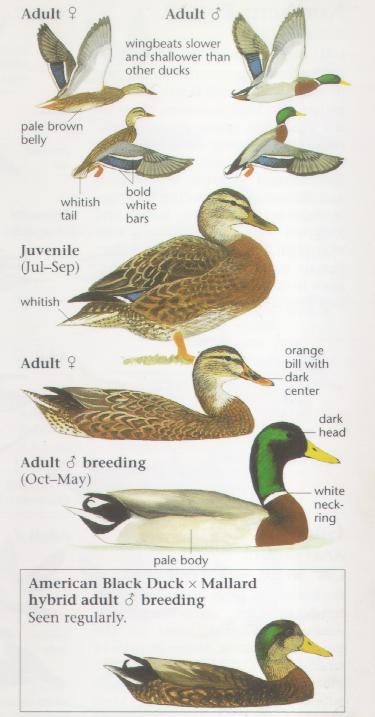
Photo taken from: The Sibley Field Guide by David Allen Sibley
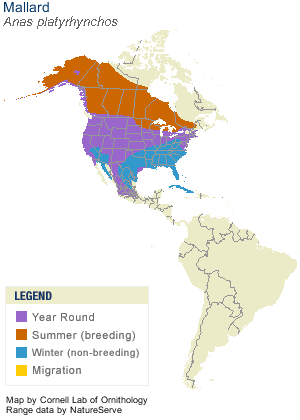
© 2003 Cornell Lab of Ornithology
|
Habitat |
|
Found in all wetland habitats. |
|
Behavior |
|
Dabbles, filter-feeds at surface of water, tips-up in shallow water, and makes occasional dives in deeper water. |
|
Food |
|
Insects and larvae, aquatic invertebrates, seeds, acorns, aquatic vegetation, grain. |
Taxonomy
| Kingdom: | Animalia |
| Phylum: | Chordata |
| Subphylum: | Vertebrata |
| Class: | Aves |
| Order: | Anseriformes |
| Family: | Anatidae |
| Subfamily: | Anserinae |
| Genus: | Anas |
| Species: | Anas platyrhynchos |
| Subspecies: | Anas platyrhynchos conboschas |
| Anas platyrhynchos diazi | |
| Anas platyrhynchos platyrhynchos |
Similar Species |
|
|
Bird Sound |
|
Female gives loud series of quacks. Male makes softer, rasping "rab," also a grunt and whistle during display. Wings whistle in flight. |
|
Eggs look like this |
|
Photo taken from: ARCTOS Collaborative Collection Management Solution |
Videos
Mallard Duck 1
Crested female
Mallard Duck 2
Mallard Ducklings #1
Mallard Duck 3
Mallard Ducklings #2
Mallard Duck 4
Mallard Ducklings #3
Mallard Duck 5
Having a Neighborly Dispute
Mallard Duck 6
Mallards mating
